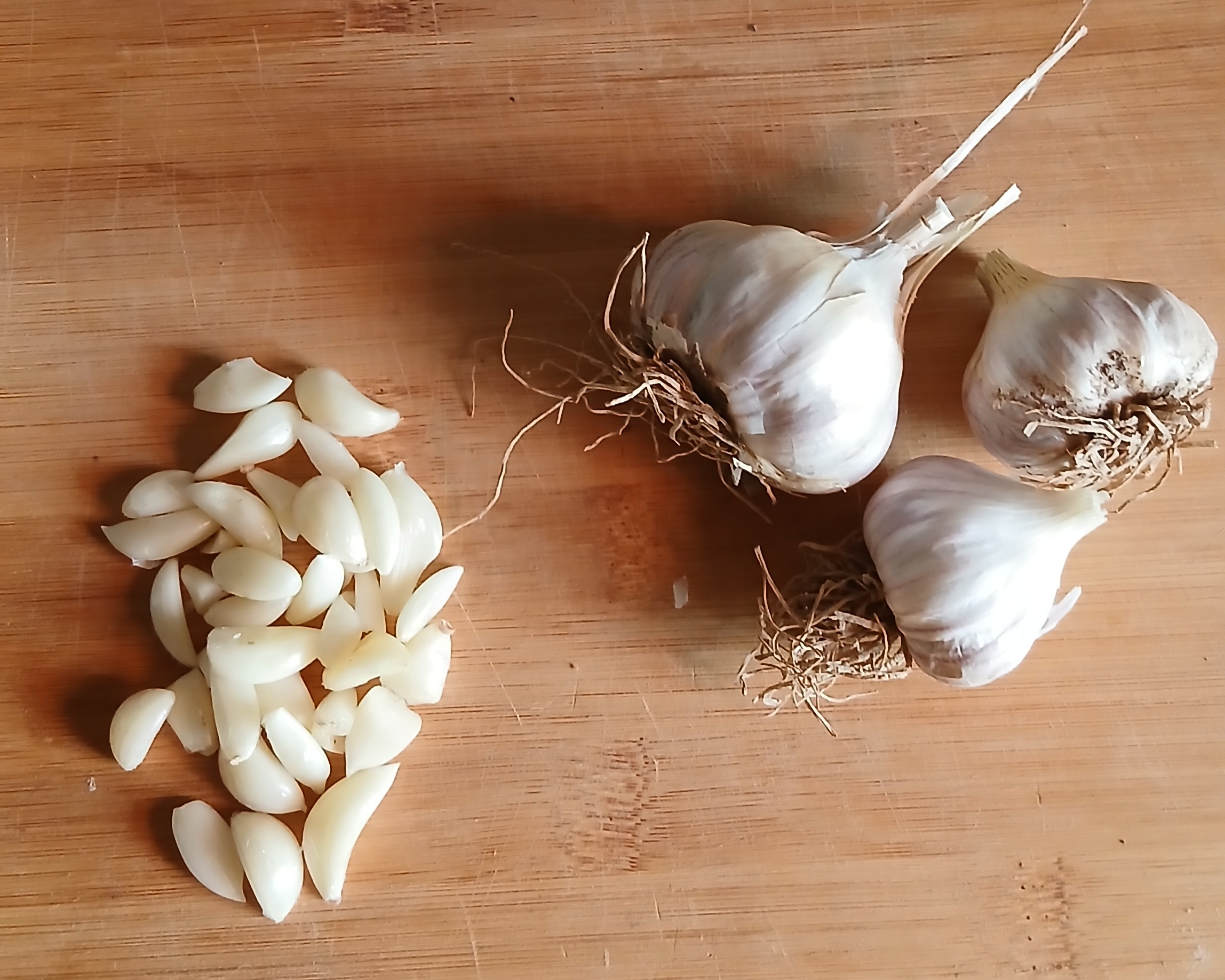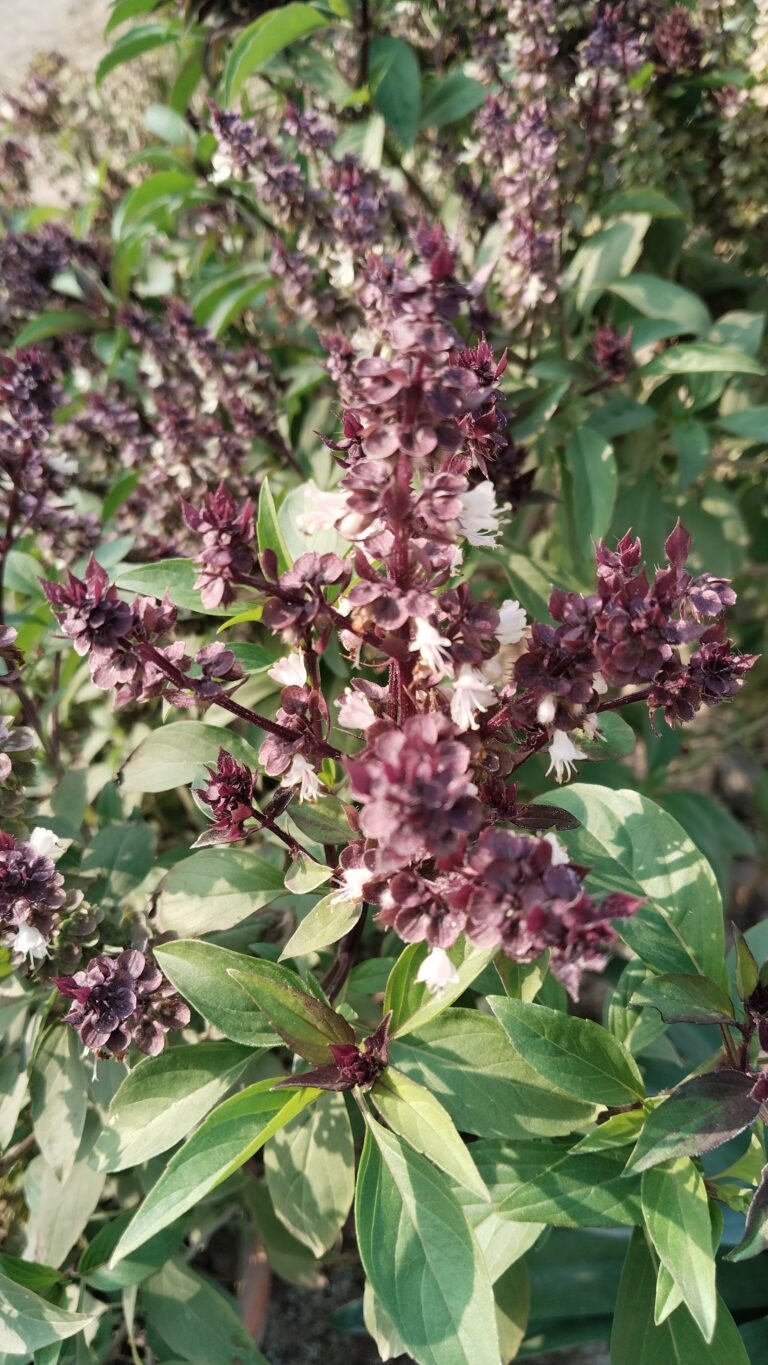Garlic 101: An Exclusive Powerhouse
Introduction
Garlic (Allium sativum) is celebrated not only for its robust flavor but also for its numerous health benefits, earning it the title of a “superfood.” Rich in bioactive compounds like allicin, this has been shown to possess powerful antioxidant, anti-inflammatory, and antimicrobial properties. It supports cardiovascular health by lowering blood pressure and cholesterol and boosts the immune system to help combat infections.
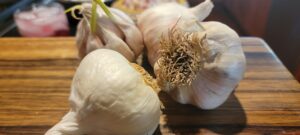
Historically, garlic has been valued in traditional medicine for thousands of years, used by ancient Egyptians and recognized by Greek and Roman civilizations for its culinary and health benefits. Recent studies continue exploring garlic’s molecular structure and mechanisms, reinforcing its status as a functional food and highlighting its significant role in nutrition and health.
A Botanical Powerhouse
Garlic, scientifically classified within the Allium genus, shares its botanical family with other well-known members such as onions, leeks, and shallots. This humble bulb has been revered for its therapeutic properties for thousands of years, dating back to ancient civilizations including Egypt, Greece, and China. Historical records indicate that these early societies recognized garlic’s significant potential to ward off various illnesses, boost energy levels, and even enhance longevity.
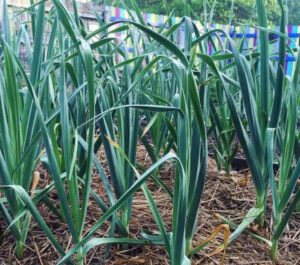
The Egyptians, for instance, have used it as a performance enhancer for laborers and athletes, employing it to fortify their physical strength and resilience. Similarly, Greek physicians like Hippocrates utilized garlic in their practices, acknowledging its medicinal qualities. In traditional Chinese medicine, this was often prescribed for its antimicrobial and immune-supportive properties.
Today, modern scientific research has begun to uncover the complex bioactive compounds found in it, such as allicin, diallyl sulfide, and various sulfur compounds, which contribute to its wide array of health benefits. These components are believed to possess antioxidant, anti-inflammatory, and antimicrobial properties, offering insights into garlic’s remarkable ability to support overall health and well-being. As a result, garlic has earned a rightful place in culinary traditions and holistic health practices worldwide.
Bioactive Compounds in Garlic
Garlic stands out as a remarkable health-promoting food due to its complex chemistry. When it is chopped, crushed, or chewed, an enzyme called alliinase catalyzes the transformation of alliin, a sulfur-containing amino acid, into allicin. Allicin is the compound most commonly associated with garlic’s health benefits and its distinctive aroma. However, it is inherently unstable and quickly breaks down into various organosulfur compounds, including diallyl disulfide (DADS), diallyl trisulfide (DATS), and S-allyl cysteine (SAC). Extensive scientific research has focused on these compounds for their potential pharmacological effects.
The sulfur compounds in garlic are responsible for its pungent odor and unique flavor, but their significance goes far beyond culinary contributions. These compounds exhibit beneficial properties, including antioxidant effects, antibacterial activity, anti-inflammatory responses, and cardioprotective benefits. The cumulative effects of these compounds create a synergistic impact that enhances overall health and well-being.
Additionally, the diverse biological activities of these organosulfur compounds suggest that they operate as a Poly pharmacological agent. This offers multiple therapeutic effects that can simultaneously address various health concerns. Such characteristics elevate garlic to the status of a superfood, making it an invaluable addition to a balanced diet aimed at improving health outcomes and preventing disease.
Cardiovascular Support
Cardiovascular disease remains the leading cause of death worldwide. Garlic has been recognized as a cardioprotective superfood due to its numerous heart-health benefits. Multiple studies have found that garlic supplementation can lower blood pressure, particularly in individuals with hypertension. According to a meta-analysis published in the Journal of Nutrition, aged garlic extract can reduce systolic blood pressure in hypertensive patients by up to 10 mmHg, which is comparable to conventional antihypertensive medications.
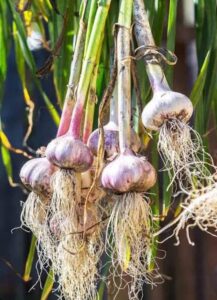
Garlic has also been proven to improve lipid profiles by lowering total cholesterol and low-density lipoprotein (LDL), while modestly increasing high-density lipoprotein (HDL). These lipid-modifying effects are believed to result from the suppression of hepatic enzymes involved in cholesterol production.
Furthermore, garlic boosts nitric oxide (NO) production, which enhances vasodilation and blood flow. Its antiplatelet properties help prevent blood clot formation, reducing the risk of thrombotic events such as heart attacks and strokes.
Antioxidant Activity and Oxidative Stress Reduction
Oxidative stress, which is generated by an imbalance of free radicals and antioxidants, is a major contributor to aging and chronic disease. This marvelous wonder contains powerful antioxidants such as selenium and other phenolic components, which help neutralize free radicals and reduce oxidative damage.
Studies have shown that its supplementation boosts the activity of major antioxidant enzymes such as superoxide dismutase (SOD), glutathione peroxidase, and catalase. These enzymes defend cells against DNA damage, lipid peroxidation, and mitochondrial malfunction. The activation of these systems demonstrates garlic’s important function in cellular defense and lifespan.
Immunomodulatory Effects
Another major reason to categorize it as a superfood is its immune-boosting properties. It functions as an immunomodulator, boosting the activity of immune cells like macrophages, lymphocytes, natural killer (NK) cells, and dendritic cells. These immune-stimulating properties are most noticeable in aged extract, which has been found to boost immunological surveillance and shorten the duration and severity of upper respiratory tract infections.
One clinical trial with 146 participants discovered that taking these supplements for 12 weeks resulted in 63% fewer colds and faster recovery than those given a placebo. This shows that it has the potential to improve resistance to common infections and minimize reliance on antibiotics.
Antimicrobial and Antifungal Properties

Garlic has long been praised for its capacity to fight infectious diseases. Allicin and similar sulfur compounds have extensive antibacterial activity against bacteria, viruses, fungi, and even some parasites. Unlike traditional antibiotics, garlic components work without considerably building resistance, which is an increasingly crucial factor in the age of antibiotic-resistant organisms.
Studies have shown that garlic is effective against Staphylococcus aureus, Escherichia coli, Candida albicans, and even Helicobacter pylori, a bacterium linked to stomach ulcers and gastric cancer. Its antifungal properties are especially useful in the treatment of candidiasis and fungal skin diseases.
A Chemo-preventive Ally
Cancer chemoprevention through dietary treatments is a rising area of study, and this is an excellent option. Epidemiological studies have linked increased garlic consumption to a lower risk of numerous malignancies, notably gastrointestinal cancers like colorectal and stomach cancer.

Its anti-cancer actions are achieved through mechanisms, including prevention of carcinogen activation, promotion of DNA repair, induction of apoptosis in malignant cells, and suppression of tumor angiogenesis. Diallyl sulfides and ajoene, a garlic derivative, are known to affect critical signaling pathways, such as NF-κB, MAPK, and PI3K/Akt, that are involved in cell proliferation and survival.
In vivo mouse studies have repeatedly showed that administering garlic extract reduces tumor incidence and development. While human research is ongoing, existing evidence clearly supports garlic’s inclusion in cancer-prevention diets.
Anti-Inflammatory Action
In my previous blogs, we have discussed some other superfoods like ginger, flax seeds, sunflower seeds, and turmeric. Chronic inflammation is a secret cause of many modern diseases, such as diabetes, Alzheimer’s, and arthritis. Garlic contains bioactive chemicals that regulate inflammatory pathways, particularly by reducing the synthesis of pro-inflammatory cytokines such as IL-6, TNF-alpha, and CRP.
It can reduce systemic inflammation by inhibiting inflammatory gene expression and NF-κB activation. This is especially useful in autoimmune and metabolic illnesses, where inflammation is a key factor in disease progression.
Metabolic Support: A Natural Ally Against Diabetes
Diabetes mellitus, particularly type 2, is distinguished by insulin resistance and hyperglycemia. This botanical wonder has shown promise for enhancing insulin sensitivity and glycemic management. Garlic supplements have been shown in studies to reduce fasting blood glucose, HbA1c, and insulin resistance indicators.
It has multiple mechanisms of action, including improving pancreatic β-cell activity, reducing oxidative stress in metabolic organs, and improving peripheral glucose uptake. These properties make it an important addition to traditional diabetes care procedures.
Neuroprotection and Cognitive Health
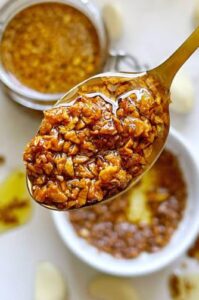
Neurodegenerative disorders like Alzheimer’s and Parkinson’s disease are growing more common among the elderly. The neuroprotective properties of this bounty result from its antioxidant and anti-inflammatory properties, as well as its ability to control neurotransmitter function.
The aged extract, in particular, has been proven to lower amyloid-beta formation, which is characteristic of Alzheimer’s disease. It also improves cognitive performance by increasing cerebral blood flow and decreasing neuroinflammation. According to recent studies, garlic may help retain memory, learning ability, and motor coordination as part of a neuroprotective dietary regimen.
Detoxification and Liver Support
It provides targeted assistance for the liver, which is responsible for detoxifying toxins. The sulfur components promote phase I and phase II detoxification enzymes, allowing toxins to be converted and eliminated more efficiently.
It also helps minimize heavy metal toxicity. A study published in Basic & Clinical Pharmacology & Toxicology indicated that garlic was more efficient than the medication d-penicillamine in lowering blood lead levels in lead-exposed workers. This detoxifying power demonstrates garlic’s unique ability to support the body’s natural cleansing mechanisms.
Gut Health and Microbiome Modulation
It has a good impact on the gut microbiome is essential for overall health. It functions as a prebiotic by specifically boosting the growth of good bacteria like Lactobacillus and Bifidobacteria. At the same time, it reduces dangerous microorganisms while maintaining microbiome diversity.
This equilibrium promotes better digestion, increased food absorption, and fewer gastrointestinal illnesses. Emerging evidence reveals that a healthy microbiome regulates mood, metabolism, and immune function, highlighting garlic’s advantages.
Practical Applications and Dosage Considerations
While raw garlic has the most significant bioactive effects, some people may be put off by its strong flavor and odor. Aged garlic extract, garlic oil, and garlic powder are more pleasant options with consistent dosing. Clinical trials usually employ 600-1200 mg of aged garlic extract per day, divided into several dosages.
To maximize the advantages, let garlic sit for 5-10 minutes after cutting to allow allicin to develop. Cooking garlic at high temperatures can damage its medicinal ingredients, so use gentle cooking methods or incorporate it raw into sauces and dips can help preserve its therapeutic properties.
Conclusion
Garlic’s wide range of health benefits—from cardiovascular and metabolic support to antibacterial and neuroprotective properties—distinguishes it as a true superfood. Its multiple effects on vital physiological systems, combined with a long history of use and excellent scientific support, make it an essential component of the modern diet.
Garlic, like many functional foods, works best when included in a well-balanced, nutrient-dense diet. Whether ingested fresh, aged, or in supplement form, garlic remains a monument to nature’s healing power—a small bulb with enormous potential.

